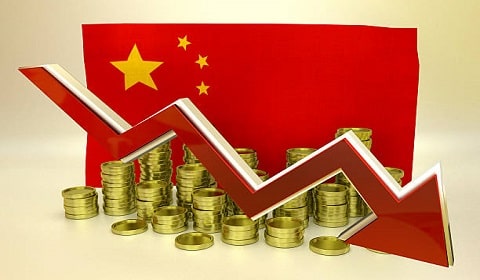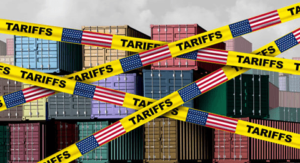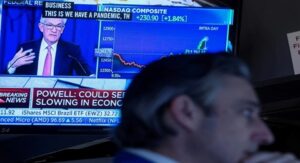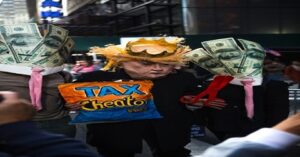
China's Economic Challenges
China’s economic Slowdown in 2023 marks a significant shift in the global economic situation. Despite achieving a 5.2% growth in real gross domestic product, meeting Beijing’s target, China experienced its first decline in nominal GDP in 29 years.
Premier Li Qiang’s optimistic outlook at the World Economic Forum contrasts with the stark reality of China’s one of the biggest economic challenges. The post-pandemic rebound lacks vigor, with indicators like the purchasing managers’ index remaining below the threshold of economic expansion.
Real estate, a cornerstone of the economy, faces a deep slump, while sluggish consumer spending and a shrinking workforce compound the issue. This slowdown raises concerns about the future trajectory of China’s economy and its impact on global growth dynamics.
China’s Economic Slowdown
China’s economic prowess, historically synonymous with global prosperity, faces notable hurdles. In 2023, while meeting growth targets, China experienced its initial nominal GDP decline in almost 30 years when measured in dollars, signaling a potential shift in China’s economic prospects and the global economic aspect.
This downturn hints at shifting dynamics within the global economy, potentially altering the landscape China has long dominated. The nation’s trajectory, once a beacon of hope for worldwide growth, now encounters formidable challenges, including China’s economic slowdown.
Challenges need attention, as they could signal broader transformations in the interconnected web of international trade and finance. China’s economic fate not only impacts its own citizens but also reverberates globally, underscoring the importance of understanding and addressing the complexities at play.
Here, we examine the key factors driving this change and its implications for both China and the world.
Table of Contents
1. China’s Economic Growth and Global Positioning
In 2023, China witnessed a commendable 5.2% growth in real GDP, solidifying its position as an economic superpower. However, amidst this economic expansion, a significant challenge emerged as its nominal GDP, measured in dollar terms, experienced a rare decline for the first time in nearly thirty years.
It resulted in China’s share of the global economy contracting for the second successive year, raising concerns about China’s economic slowdown. Despite the robust growth in real GDP, this decline in nominal GDP underscores underlying economic complexities and potential vulnerabilities.
China’s economic trajectory, influenced by various internal and external factors, reflects the intricate dynamics shaping its position in the global economy, warranting careful analysis and strategic responses to navigate future challenges.
2. Premier’s Optimism vs. Economic Reality
Chinese Premier Li Qiang conveyed optimism regarding China’s economic advancement at the World Economic Forum in Davos. Nonetheless, the tangible economic situation paints a different picture, characterized by a tepid recovery.
Vital indicators such as the manufacturers’ purchasing managers’ index have consistently lingered below the critical threshold of 50 throughout the year. This discrepancy between official rhetoric and on-the-ground realities suggests a nuanced economic aspects, warranting cautious interpretation and a closer examination of underlying factors influencing China’s economic trajectory.
However, amidst these considerations, the specter of China’s economic slowdown looms large, adding another layer of complexity to the analysis.
3. Real Estate Slump and Slow Consumer Spending
China’s vital real estate sector endured a profound downturn marked by plummeting home prices and diminished investment in development. This slump, coupled with sluggish private-sector earnings and restrained household income growth, contributed to a tepid recovery in consumer spending.
The sector’s struggles reverberated through the economy, challenging its stability and resilience. As one of China’s economic pillars, the real estate market’s woes underscored broader concerns about growth prospects and the need for structural reforms to foster sustainable development and alleviate economic pressures.
Additionally, China’s economic slowdown further exacerbated these challenges, highlighting the urgency of addressing underlying issues to facilitate a more robust recovery.
4. Deflationary Pressures and Rising Concerns
China’s nominal GDP growth decelerated relative to real GDP for the first time in eight years, signaling mounting deflationary forces. Economists caution against a potential “Japanification” of China’s economy, likening it to Japan’s protracted economic stagnation post-bubble burst.
This shift underscores concerns about China’s economic trajectory, as slower nominal growth may reflect weakening demand and pricing pressures. If left unchecked, such trends could pose significant challenges to China’s economic stability and growth prospects, echoing the prolonged struggles witnessed in Japan.
China’s economic slowdown adds further pressure to the situation, exacerbating the already existing concerns.
5. Global Economic Impact and China’s Weight
China’s economic slowdown rippled globally, with a 0.5% drop in its dollar-denominated nominal GDP in 2023. This contraction, combined with the yuan’s depreciation against the dollar, suggested a potential plateau in China’s influence on the world stage amid global political turmoil.
The interconnectedness of the global economy magnified these effects, raising concerns about broader economic stability.
China’s evolving economic trajectory underscores the importance of monitoring its impacts beyond national borders, as shifts in its growth dynamics can reverberate throughout the international financial landscape, shaping investment strategies and geopolitical considerations.
6. Long-Term Challenges and Labor Shortages
China faces significant demographic challenges with an aging population and declining birth rates, posing enduring barriers to economic expansion. The dwindling working-age populace and historically low birth rates underscore the urgency for comprehensive strategies to invigorate growth beyond mere infrastructure investments.
Addressing these issues demands innovative policies aimed at revitalizing the labor force and fostering sustainable demographic rejuvenation to sustain economic vibrancy in the long term.
Additionally, China’s economic slowdown further complicates these demographic challenges, requiring even more concerted efforts to stimulate growth and ensure stability in the face of evolving economic conditions.
7. Shift in Global Economic Dynamics
As China’s economy decelerates, other emerging markets such as India and Brazil are gaining prominence, reshaping the global economic landscape. This transition compels businesses to reassess their approaches and expand their market reach beyond China’s borders.
India and Brazil’s growing influence in driving global growth highlights a shift in economic dynamics, prompting companies to diversify their strategies to capitalize on emerging opportunities.
The simultaneous rise of these nations underscores the importance of adaptability and agility in navigating the evolving global marketplace, as businesses seek to harness the potential of diverse markets to sustain and propel their growth trajectories amid China’s economic slowdown.
The One Belt, One Road Initiative proposed by China aims to strengthen infrastructure and connectivity across Asia, Africa, and Europe, potentially opening up new avenues for trade and investment amidst the shifting economic scenario.
Bottom Line
China’s economic trajectory is at a critical juncture, with slowing growth, deflationary pressures, and demographic challenges posing significant risks. While the country has been a driving force in the global economy for decades, its recent struggles, including China’s economic slowdown, suggest a potential shift in the balance of economic power.
Addressing these challenges will require bold and innovative policy measures aimed at stimulating domestic demand, fostering innovation, and adapting to demographic changes. As China navigates these challenges, the world will be watching closely, as the implications extend far beyond its borders.





